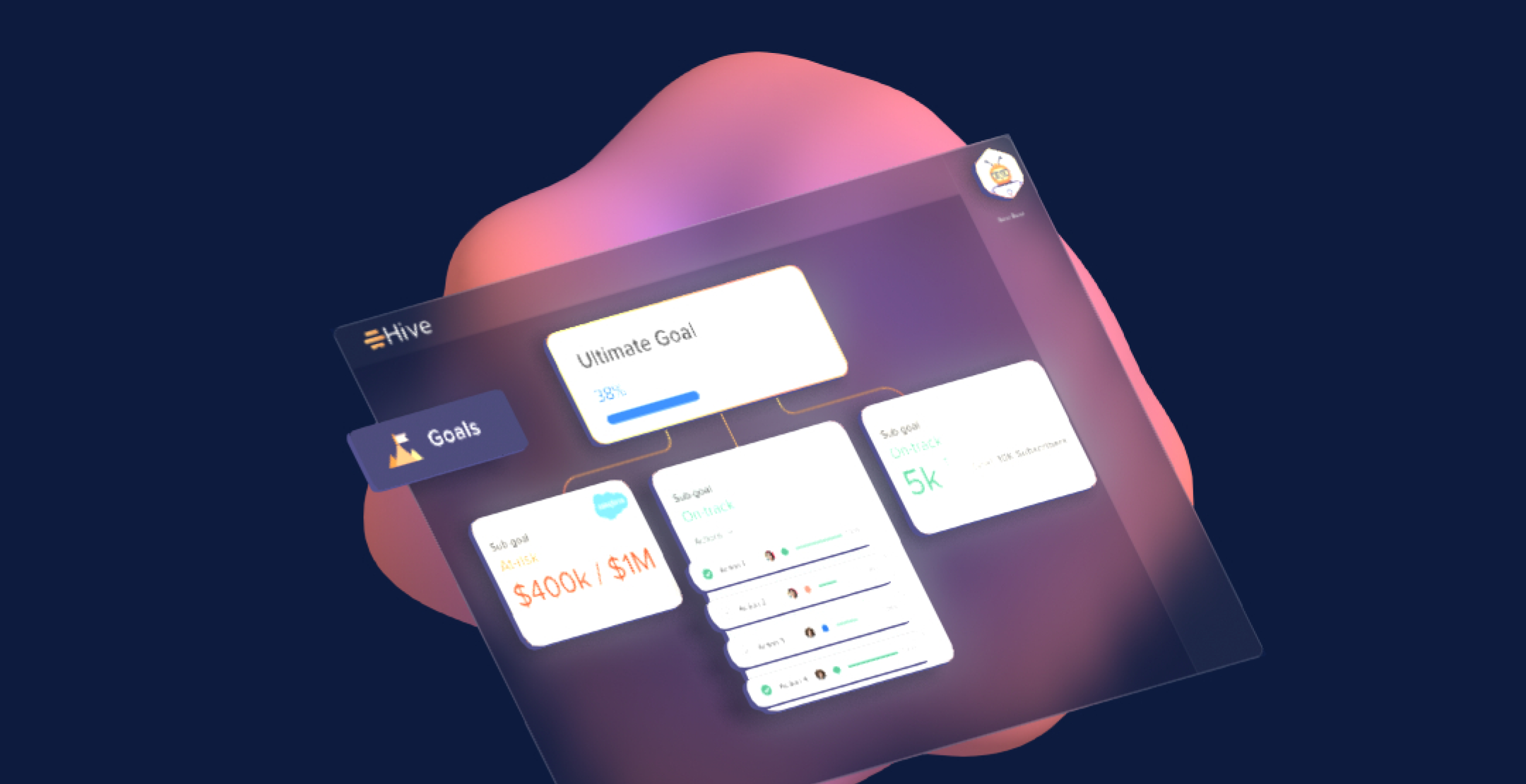In the perpetual quest for productivity and efficiency, adopting innovative tools and strategies has become paramount. At the forefront of this pursuit lies goal-setting software, a dynamic solution poised to revolutionize how individuals and organizations approach productivity.
By providing users with the means to define, track, and achieve their objectives with precision, this software empowers individuals to unlock their full potential and organizations to reach new heights of success.
Join us as we embark on a deep dive into the myriad benefits of goal-setting software, exploring how it enhances clarity, accountability, collaboration, and ultimately, productivity in both personal and professional spheres.
Importance of productivity in personal and professional life
Productivity stands as a cornerstone of success, influencing both personal fulfillment and professional achievement. In personal life, productivity enables individuals to effectively manage their time, pursue their passions, and achieve their goals. It fosters a sense of accomplishment and fulfillment, leading to greater satisfaction and overall well-being.
Similarly, in the professional realm, productivity drives efficiency, innovation, and competitiveness. It allows businesses to meet deadlines, exceed targets, and adapt to changing market demands. Ultimately, productivity empowers individuals and organizations to maximize their potential, accomplish more in less time, and thrive in today’s dynamic and competitive world.
Overview of goal-setting software features
• Goal Definition: Enables users to define clear, measurable objectives.
• Task Organization: Helps organize tasks and prioritize activities in alignment with goals.
• Progress Tracking: Provides real-time updates on goal progress and milestones.
• Collaboration Tools: Facilitates teamwork and communication among users working towards common goals.
• Analytics and Reporting: Offers insights into performance metrics and trends to inform decision-making and strategy adjustments.
Different types of goal-setting software are available
• Personal Goal-Setting Apps: Designed for individuals seeking to manage personal goals, habits, and aspirations.
• Project Management Software: Offers goal-setting features within a broader project management framework, ideal for teams collaborating on complex projects.
• Performance Management Platforms: Focuses on setting and tracking goals aligned with organizational objectives, often used for employee performance evaluation and development.
• Task Management Tools: Integrates goal-setting functionalities into task management workflows, suitable for individuals and small teams seeking to enhance productivity and organization.
Evolution of goal-setting software from traditional methods
While traditional methods served as basic tools for setting and tracking goals, they lacked the sophistication and efficiency of modern software solutions. The advent of goal-setting software introduced features like real-time collaboration, automated progress tracking, and data analytics, revolutionizing the goal-setting process.
Today’s goal-setting software leverages advancements in technology, such as cloud computing and artificial intelligence, to offer intuitive interfaces, personalized recommendations, and seamless integrations with other productivity tools. This evolution has enabled individuals and organizations to set and achieve goals more effectively, driving productivity and success in personal and professional endeavors.
Enhanced Clarity and Focus
How Goal-Setting Software Promotes Clarity in Goal Definition?
Goal-setting software provides a structured framework for defining goals, ensuring clarity and specificity from the outset. By prompting users to articulate their objectives in clear, measurable terms, such software eliminates ambiguity and facilitates a deeper understanding of desired outcomes.
Through features like goal templates, SMART criteria guidance, and prompts for detailed descriptions, goal-setting software empowers users to articulate their aspirations with precision, laying a solid foundation for effective planning and execution.
Facilitating Focus Through Prioritization and Organization Tools
Once goals are defined, goal-setting software facilitates focus through robust prioritization and organization tools. By enabling users to categorize goals, set deadlines, and allocate resources, such software ensures that attention is directed toward the most critical objectives. With features like task lists, kanban boards, and Gantt charts, users can visualize their goals, identify dependencies, and allocate time and effort accordingly.
This systematic approach to prioritization and organization minimizes distractions, streamlines workflows, and enhances focus, empowering individuals and teams to make meaningful progress toward their goals.
Accountability and Motivation
Establishing Accountability Through Progress Tracking and Reminders
Goal-setting software facilitates accountability by enabling users to track their progress toward established goals. Through intuitive dashboards, progress bars, and milestone tracking features, individuals can monitor their achievements in real time, fostering a sense of accountability for their actions.
Additionally, built-in reminder functionalities prompt users to stay focused and adhere to deadlines, reducing the likelihood of procrastination and ensuring consistent progress toward their goals. Goal-setting software helps individuals maintain momentum and take ownership of their success journey by promoting visibility and accountability.
How Goal-Setting Software enhance motivation and Commitment?
Goal-setting software enhances motivation and commitment by leveraging various psychological principles and motivational techniques. Features such as gamification elements, progress visualization tools, and personalized goal-tracking mechanisms stimulate intrinsic motivation, encouraging individuals to strive for continuous improvement.
Moreover, the ability to break down larger goals into smaller, manageable tasks fosters a sense of progress and accomplishment, fueling motivation and sustaining commitment over time. By providing a platform for setting meaningful goals, tracking progress, and celebrating achievements, goal-setting software cultivates a positive feedback loop that reinforces motivation and strengthens commitment towards goal attainment.
Collaboration and Communication
Utilizing Collaboration Features to Involve Teams in Goal-Setting
Goal-setting software offers robust collaboration features that enable teams to actively participate in the goal-setting process. Through shared workspaces, collaborative goal creation, and commenting functionalities, team members can contribute their insights, expertise, and feedback to the goal-setting process.
By involving teams in goal-setting, organizations harness the collective wisdom and creativity of their members, ensuring that goals are aligned with broader objectives and reflective of diverse perspectives. This collaborative approach fosters a sense of ownership and commitment among team members, increasing buy-in and motivation towards goal attainment.
Communication Through Shared Objectives and Progress Updates
Goal-setting software enhances communication by providing a centralized platform for sharing objectives and progress updates with team members. Through features like goal dashboards, activity feeds, and real-time notifications, teams can stay informed about the status of goals, milestones, and key developments.
Moreover, the ability to comment, collaborate, and provide feedback within the software promotes transparency and fosters open communication channels among team members. By sharing objectives and progress updates, goal-setting software ensures alignment, accountability, and coordination across teams, ultimately driving synergy and optimizing collective performance.
Data-Driven Insights and Decision-Making
Leveraging Analytics Tools for Data-Driven Insights
Goal-setting software leverages sophisticated analytics tools to transform raw data into meaningful insights. Through features such as customizable dashboards, trend analysis, and predictive modeling, users can gain a deeper understanding of their performance metrics and trends over time.
By visualizing data in intuitive formats such as charts, graphs, and heatmaps, goal-setting software enables users to identify patterns, anomalies, and areas for improvement, empowering them to make data-driven decisions that drive productivity and success.
Making Informed Decisions Based on Performance Metrics
Armed with data-driven insights, users of goal-setting software can make informed decisions that optimize goal-setting strategies and maximize outcomes. By analyzing performance metrics such as goal completion rates, task completion times, and resource utilization, organizations can identify bottlenecks, allocate resources more effectively, and adjust goals and priorities as needed.
Moreover, goal-setting software enables users to track the impact of their decisions in real time, facilitating continuous improvement and agility in response to changing circumstances. By embracing data-driven decision-making, organizations can enhance their competitive advantage, drive innovation, and achieve their strategic objectives with greater precision and efficiency.
Flexibility and Adaptability
Adapting Goals and Strategies to Changing Circumstances
Adapting goals and strategies to changing circumstances is a fundamental aspect of goal management. Whether due to shifting market conditions, unexpected obstacles, or new opportunities, organizations must be agile in their approach to goal-setting.
Goal-setting software provides users with the flexibility to modify goals, timelines, and action plans as needed, ensuring that objectives remain relevant and achievable in light of evolving circumstances.
By fostering adaptability, goal-setting software enables organizations to stay responsive and proactive in pursuit of their goals, mitigating risks and seizing opportunities in an ever-changing environment.
How Goal-Setting Software Accommodates Flexibility in Goal Management?
• Dynamic Goal Adjustment: Users can easily modify goals, timelines, and milestones within the software interface, allowing for seamless adaptation to changing circumstances.
• Agile Methodologies: Goal-setting software often incorporates agile methodologies such as Scrum or Kanban, emphasizing iterative goal-setting and continuous improvement, enabling teams to respond quickly to feedback and adjust goals accordingly.
• Collaborative Workspaces: Shared workspaces and collaboration features facilitate communication and coordination among team members, enabling them to collaborate effectively on goal adjustments and strategy revisions.
• Integration Capabilities: Goal-setting software integrates with other productivity tools and platforms, enabling users to access real-time data and insights from multiple sources, informing their decision-making and goal-management practices.
Tips for Maximizing Productivity with Goal-Setting Software
Best Practices for Effective Goal-Setting and Management:
• Set SMART Goals: Ensure that goals are Specific, Measurable, Achievable, Relevant, and Time-bound to provide clarity and focus.
• Prioritize Goals: Identify high-priority goals and allocate resources accordingly to maximize impact and efficiency.
• Break Down Goals: Divide larger goals into smaller, manageable tasks to facilitate progress tracking and maintain momentum.
• Regularly Review Goals: Schedule regular review sessions to assess progress, adjust goals as needed, and celebrate achievements.
• Stay Flexible: Remain open to adapting goals and strategies in response to changing circumstances or new insights.
Strategies for Optimizing the Use of Goal-Setting Software:
• Explore Features: Take the time to familiarize yourself with the features and functionalities of the goal-setting software to leverage its full potential.
• Customize Settings: Customize settings and preferences to align with your specific goals, workflows, and preferences for a personalized experience.
• Integrate with Other Tools: Integrate goal-setting software with other productivity tools and platforms you use regularly to streamline workflows and access relevant data.
• Collaborate Effectively: Utilize collaboration features to involve team members in goal-setting and foster transparency, communication, and accountability.
• Utilize Analytics: Take advantage of analytics tools to gain insights into your performance metrics, identify trends, and make informed decisions.
Recommendations for Integrating Goal-Setting Software into Daily Routines:
• Establish a Routine: Set aside dedicated time each day or week to review goals, update progress, and plan upcoming tasks using the goal-setting software.
• Set Reminders: Use reminder features to prompt you to review goals, stay on track with deadlines, and maintain consistency in goal management.
• Make it Visible: Keep your goals and progress visible by displaying them in your workspace or setting them as reminders on your devices to stay motivated and focused.
• Incorporate Reflection: Take time to reflect on your achievements, challenges, and lessons learned using the goal-setting software to inform future goal-setting and decision-making.
• Stay Committed: Commit to consistently using goal-setting software as part of your daily routine to build momentum, track progress, and ultimately achieve your goals with greater efficiency and effectiveness.
Conclusion
Goal-setting software is a transformative tool for maximizing productivity and achieving success in both personal and professional endeavors. By providing a structured framework for goal-setting, facilitating collaboration and communication, and offering data-driven insights, this software empowers individuals and teams to navigate their objectives with clarity, focus, and efficiency.
As we continue to adapt to the demands of a dynamic world, embracing goal-setting software emerges not only as a strategic imperative but also as a catalyst for driving innovation, fostering growth, and realizing our full potential.



